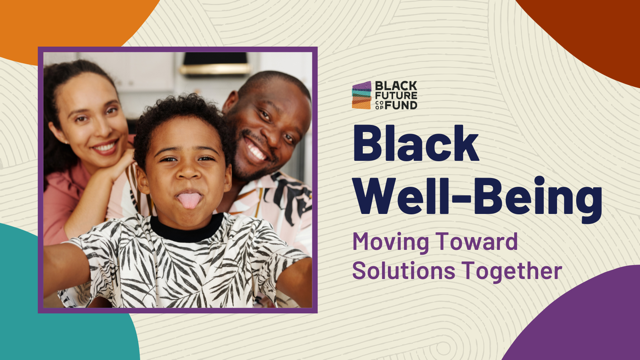“When Black communities thrive, all communities thrive.”
This is the truth behind the new report released by the Black Future Co-op Fund, Washington’s first Black-led cooperative philanthropy. Black Well-being: Moving Toward Solutions Together elevates community identified approaches to tackling the structural barriers prohibiting Black well-being and highlights the changes needed to create the world Black people envision.
“This Black Well-being report is a tool for advocacy and policy change and for building power,” said Andrea Caupain Sanderson, CEO of Byrd Barr Place and co-architect of the Black Future Co-op Fund. “Byrd Barr Place is proud to be a partner with the Black Future Co-op Fund and many other organizations and individuals in creating this report.”
The report builds on Byrd Barr Place’s 2015 report, Creating an Equitable Future in Washington State: Black Well-being & Beyond, which has been an invaluable resource in understanding the state of Black Washingtonians. This new Black Well-being report starts with an overview of who makes up the state’s diverse Black population, followed by perceptions of progress, priorities and key metrics that have moved since the 2015 report. The rest of the report covers civic engagement, education, economic mobility, public safety and health, outlining contextual factors and community approaches.
Almost 1,000 community members contributed to this report, rooting it in the wisdom and experience of Black Washingtonians. Community members participated in a series of focus groups, surveys, panel discussions and statewide gatherings in order to accurately represent the wide breadth of Black perspectives.
“It is time we implement our own community solutions to manifest Black well-being statewide,” said Caupain Sanderson. “The current systems are failing us—they were designed that way.”
Research in the Black Well-being report highlights that even if the conditions for building wealth, like equal pay, access to capital, healthy housing and education, were the same for Black people and white people from 1870 to 2020, white households would still have three times as much wealth as Black households.
What the data shows:
- Only 1.5% of Washington’s teachers were Black in the 2020-21 school year. Yet, research shows Black students who have at least one Black teacher in grades K-3 are 13% more likely to graduate from high school and 19% more likely to enroll in college than their same-school, same-race peers.
- Homeownership—a critical path to wealth-building—was 34% for Black Washingtonians in 2020, almost half of the statewide average of 63.3%.
- Despite 93% of Black Washingtonians having health care insurance, the 37% on Medicaid experience major gaps in coverage, limiting their access to care.
- A 2022 audit by the Office of the State Auditor discovered that Black voters’ ballots were rejected four times more often than white voters.
Beyond identifying the many structural barriers and inequities faced by Black Washingtonians, the project is a love letter to the ingenuity of Black people and their capacity to envision a brighter future.
Examples of community identified approaches include:
- Dismantle systems that harm us and replace them with systems that heal.
- Center the arts in civics because they are foundational to social change.
- Redefine academic standards to recognize and cultivate Black brilliance.
- Partner with Black youth to create the jobs of tomorrow.
- Reflect well-being in employer business models and practices.
In addition to Byrd Barr Place, Black Well-being report collaborators include Cardea, Imago, Pyramid Communications, Urban League of Metropolitan Seattle, Washington State Budget & Policy Center and Washington State Commission on African American Affairs.
“Black Washingtonians deserve a state that prioritizes their well-being and actively invests in structural solutions to existing inequities,” said Caupain Sanderson. “Not only is this report a blueprint for action, it also represents the power of truthful Black narratives in shaping a future where all can thrive. We hope everyone reads the report and uses it in your work!”
To read the report and discussion questions, visit: https://www.blackfuturewa.org/blackwellbeing.


